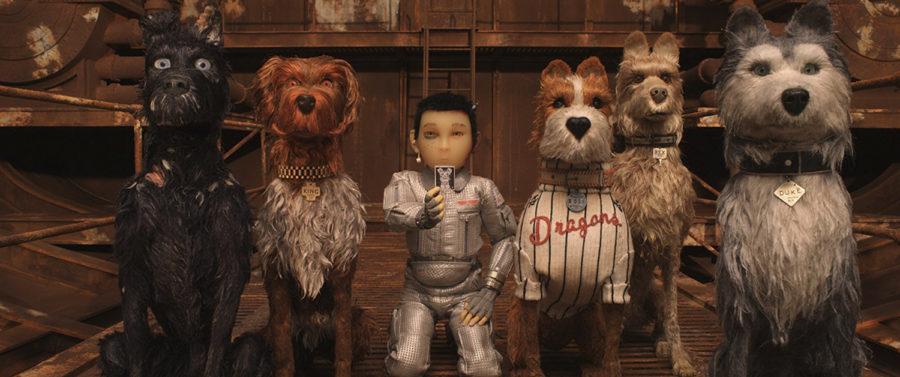Wes Anderson has once again proven himself to be one of the most visually innovative auteurs in cinema with his latest film, “Isle of Dogs.”
Set in a futuristic Japan, “Isle of Dogs” tells the tale of a headstrong 12-year-old boy named Atari, voiced by Koyu Rankin, who searches for his beloved dog Spots on Trash Island — a rancid quarantine for exiled colonies of dogs.
Kobayashi, the corrupt mayor of the fictional city of Megasaki voiced by Kunichi Nomura, has condemned every dog in Japan to Trash Island in response to an outbreak of “canine flu” and “snout fever,” though it seems he may have ulterior motives. This sparks protest from a meddlesome American foreign exchange student named Tracy Walker, voiced by Greta Gerwig, and others who believe Mayor Kobayashi is treating dogs unfairly.
As Walker rallies the people of Japan against the mayor, Atari befriends five comically frayed dogs — Chief, Rex, King, Boss and Duke — voiced by Bryan Cranston, Edward Norton, Bob Balaban, Bill Murray and Jeff Goldblum, respectively, on his journey to find Spots and prove to the people of Japan that dogs really are man’s best friend.
At first glance, this is a rather depressing story and, in the hands of any other director, it would most likely have translated as such on film. But the movie becomes a whimsically uplifting tale, encapsulated in a slightly unorthodox depiction of Japanese art and architecture.
One of Anderson’s most admirable qualities is his devotion to exploring unconventional aspects of cinematic framing and storytelling.
With his last film, “The Grand Budapest Hotel,” he impressed audiences and critics alike with his dual framing method, blending live action shots and miniature model shots to achieve a grand, European aesthetic. His use of stop-motion animation in “Isle of Dogs” is nothing short of brilliant in terms of creativity and technical achievement.
The meticulous details on the character models, such as the hair, fur, blemishes and markings, are impeccable — and accompanied by animation surprisingly fluid for a stop-motion film. Anderson also cleverly works around scenes that would detract from the fluidity of the animation, such as in the fight sequences, which are depicted as smoke clouds shrouding the chaotic fighting of characters.
From a storytelling perspective, the use of stop-motion animation allows for a more varied degree of creative expression in heightening the magical realism of the story. Tristan Oliver, cinematographer of this film and others, such as “Fantastic Mr. Fox” and “ParaNorman,” showcases a breadth of stylistic shots, such as the immersive establishing shots of a metropolitan Japan under a hazy night sky or the stunning point-of-view shots of Atari observing the dogs.
The use of physically constructed models in stop-motion animation has an edge over computer generated animation because of its visually 3-D characteristic. Acclaimed director Ridley Scott was able to achieve this effect in “Blade Runner” back in 1982, which is still praised for having more realistic set design than current CGI blockbusters.
Stop-motion animation is a medium of film that is criminally underutilized, and with “Isle of Dogs,” Anderson is able to bring it back into the cinematic limelight — exhibiting the beautiful simplicity of its framing along with the imaginative possibilities it fabricates.
One potentially problematic aspect of the film is Walker acting as “the American savior” role. Anderson, being the fastidious director he is, threw himself into a corner with his decision to have all of the Japanese characters speak in Japanese, using dogs and accessory characters to translate instead of using subtitles.
In doing so, he placed an American character as the leader in a movement exploiting the possible corruption of Japanese government officials, providing an underlying message that only an American could try to resolve Japan’s issues on its behalf.
Though Anderson needed an English-speaking character for a role with heavy dialogue to maintain the plot’s clarity, it’s still a decision that alters the film’s overall message.
Despite the controversy this film will undeniably have to endure for its lopsided representation of Japanese characters and imaginative cultural portrayal, “Isle of Dogs” is a meticulously crafted film with a timeless story of courage, loyalty and friendship.



